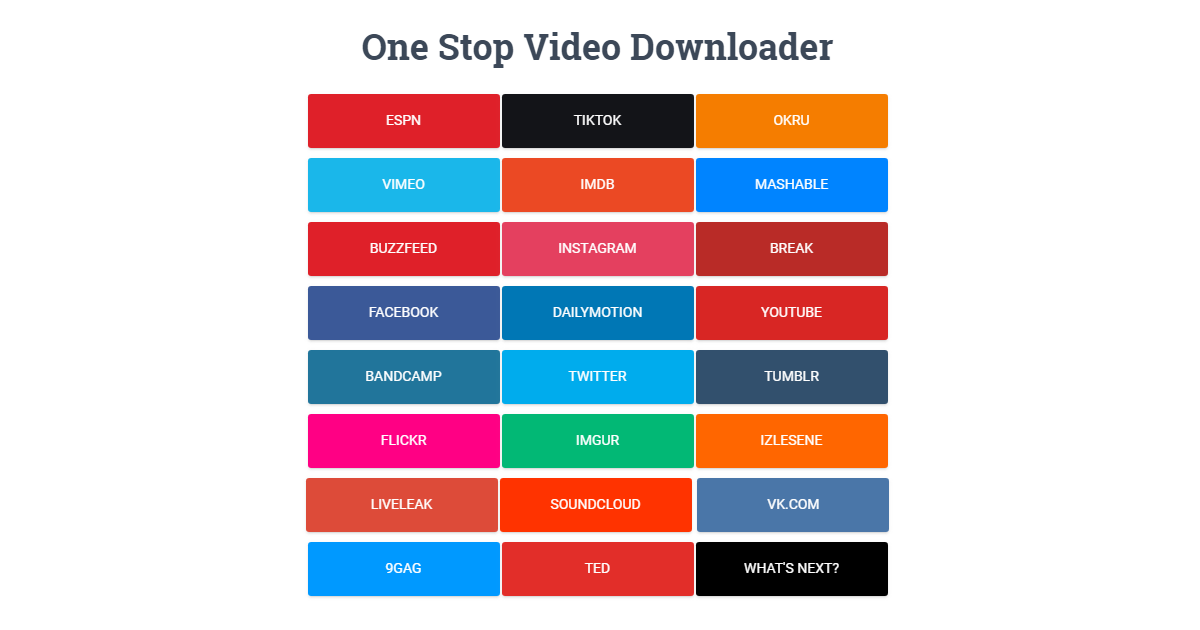DeepHot is a term that has gained significant attention in the realm of digital marketing and web development. It refers to deep linking practices that enhance user experience and improve website navigation. In this article, we will delve into the intricacies of DeepHot and its connection to deep linking, exploring its potential benefits and implications for businesses and users alike. This comprehensive guide aims to provide valuable insights into the world of deep linking, ensuring you understand why it matters in today's digital landscape.
As digital interactions become more complex, the need for effective navigation strategies has never been more crucial. Deep links allow users to bypass landing pages and navigate directly to specific content within an application or website. This not only improves user experience but also drives engagement and conversions. In this article, we will discuss the principles behind DeepHot, the various types of deep links, their applications, and how they can benefit your business.
Whether you are a marketer, developer, or business owner, understanding the dynamics of DeepHot can significantly impact your digital strategy. Join us as we explore the fascinating world of deep linking, uncovering its potential to transform user engagement and enhance your online presence.
Table of Contents
- What is Deep Linking?
- Types of Deep Links
- Benefits of Deep Linking
- How Deep Links Work
- Implementing Deep Links
- Common Mistakes in Deep Linking
- Case Studies: Success Stories
- The Future of Deep Linking
What is Deep Linking?
Deep linking is a technique that enables users to navigate to specific content within a mobile app or website, rather than simply landing on the homepage or a generic landing page. This practice enhances the user experience by providing direct access to relevant information. Deep links can be used in various contexts, including:
- Mobile applications
- Websites
- Email campaigns
- Social media posts
Understanding the Concept of Deep Linking
The concept of deep linking has evolved over time, adapting to the changing digital landscape. It allows marketers and developers to create targeted links that lead users directly to specific content, thereby improving user engagement and satisfaction. There are various forms of deep linking, each serving distinct purposes.
Types of Deep Links
Deep links can be categorized into three primary types:
- Basic Deep Links: These links direct users to specific content within an app or website that is already installed or accessible.
- Deferred Deep Links: These links guide users to specific content even if the app is not installed. If the user doesn't have the app, they will be directed to the app store to download it, and upon installation, they will be taken to the intended content.
- Contextual Deep Links: These links provide additional information to the app, allowing for personalized experiences based on user data and context.
The Importance of Choosing the Right Type of Deep Link
Choosing the appropriate type of deep link is crucial for maximizing user engagement and ensuring a seamless experience. Each type has its advantages and can be leveraged based on specific marketing goals.
Benefits of Deep Linking
Deep linking offers numerous benefits for both users and businesses, including:
- Enhanced User Experience: Users can access specific content quickly, reducing frustration and increasing satisfaction.
- Improved Engagement: Direct access to relevant content encourages users to interact more with your app or website.
- Increased Conversions: By guiding users to specific products or services, deep links can drive higher conversion rates.
- Better Marketing Campaign Performance: Deep links can be used in marketing campaigns to direct users to targeted content, improving overall campaign effectiveness.
Statistics Supporting the Benefits of Deep Linking
According to recent studies, apps that utilize deep linking see a 30% increase in user retention and a 50% boost in engagement rates. These statistics underscore the importance of incorporating deep linking strategies into your digital marketing efforts.
How Deep Links Work
Understanding the mechanics of deep linking is essential for effective implementation. Here's a breakdown of how deep links function:
- When a user clicks on a deep link, the system checks whether the app is installed on their device.
- If the app is installed, the user is directed to the specific content within the app.
- If the app is not installed, the user is redirected to the app store to download the app.
- After installation, the user is taken to the intended content, ensuring a seamless experience.
Technical Aspects of Deep Linking
Implementing deep links requires technical considerations, including URL structures, app configurations, and tracking systems. It is essential to ensure that the deep links are correctly set up to avoid broken links or poor user experiences.
Implementing Deep Links
To effectively implement deep links, follow these steps:
- Define Your Goals: Determine the purpose of your deep linking strategy, whether it be to drive sales, increase user engagement, or promote specific content.
- Create Deep Links: Use tools and platforms that facilitate the creation of deep links, ensuring they are properly formatted for both web and mobile applications.
- Test Your Deep Links: Before deployment, test your deep links to ensure they function correctly and lead users to the intended content.
- Monitor Performance: Utilize analytics tools to track the performance of your deep links, gaining insights into user behavior and engagement.
Tools for Deep Linking
Several tools are available to assist with deep linking, including Branch.io, Firebase Dynamic Links, and Adjust. These platforms offer comprehensive solutions for creating, managing, and analyzing deep links.
Common Mistakes in Deep Linking
Even experienced marketers can make mistakes when implementing deep links. Here are some common pitfalls to avoid:
- Neglecting to test deep links across different devices and platforms.
- Failing to provide a fallback option for users who do not have the app installed.
- Ignoring analytics and performance metrics, leading to missed opportunities for optimization.
- Overcomplicating the deep link structure, making it difficult for users to navigate.
Learning from Mistakes
By being aware of these common mistakes, marketers can refine their deep linking strategies, ensuring a more successful implementation.
Case Studies: Success Stories
Many companies have successfully implemented deep linking strategies, leading to impressive results. Here are a few case studies:
- XYZ Retail: By utilizing deep links in their email campaigns, XYZ Retail saw a 40% increase in sales during a promotional period.
- ABC Media: ABC Media implemented contextual deep links, resulting in a 25% increase in app engagement.
- 123 Travel: 123 Travel used deferred deep links to drive app downloads, leading to a 50% boost in user acquisition.
Key Takeaways from Case Studies
These success stories highlight the effectiveness of deep linking in driving user engagement and conversions. By learning from these examples, businesses can develop their strategies for maximum impact.
The Future of Deep Linking
The future of deep linking looks promising, with advancements in technology and user behavior shaping its evolution. Key trends to watch include:
- Increased Personalization: As data analytics improve, deep links will become more personalized, enhancing user experiences.
- Integration with AI: Artificial intelligence may play a role in optimizing deep links, predicting user behavior, and tailoring content accordingly.
- Growing Importance of Mobile: As mobile usage continues to rise, deep linking will become increasingly vital for app
Benny Blanco: The Mastermind Behind The Hits And His Songwriting Partners
Exploring The World Of Spo0pykitten: The Emerging Star Of Online Culture
Matthew Manda: A Comprehensive Insight Into His Life And Career

